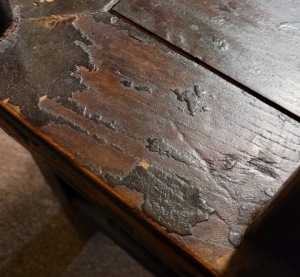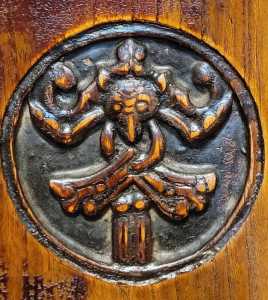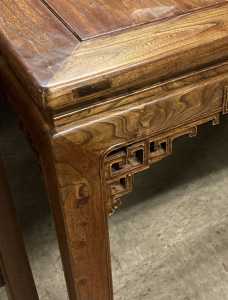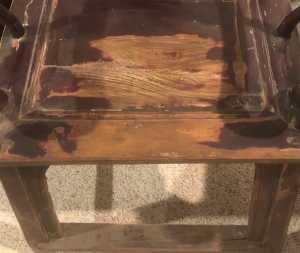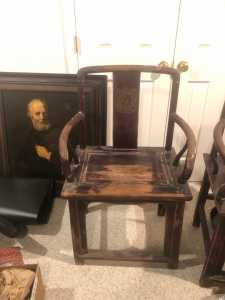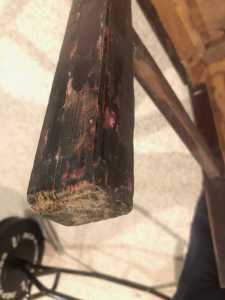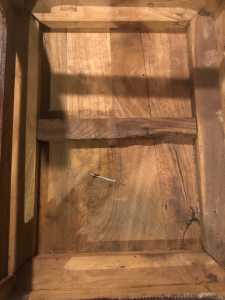The Chinese and Asian Art Forum. For Fans, Collectors and Dealers.
 Basic Rules For the BidAmount Asian Art Forum: Talk about whatever you want. You can even discuss and offer things that are for sale if they are authentic. Maximum image file size per post is 2 MB. Images of 700pxl x 700pxl are optimal if saved at a medium resolution. Be respectful of others and enjoy yourself. Click the YouTube link for a brief tutorial on using the forum. You can also EMBED Videos by cutting and pasting from You-Tube, Vimeo etc.
Basic Rules For the BidAmount Asian Art Forum: Talk about whatever you want. You can even discuss and offer things that are for sale if they are authentic. Maximum image file size per post is 2 MB. Images of 700pxl x 700pxl are optimal if saved at a medium resolution. Be respectful of others and enjoy yourself. Click the YouTube link for a brief tutorial on using the forum. You can also EMBED Videos by cutting and pasting from You-Tube, Vimeo etc.
NOTE: To post an item or add a new post, click open the category title from the FORUM LIST, and CLICK the Blue ADD TOPIC button.
@johnshoe Your chair doesn’t seem to have anyissue with size or proportion. I was speaking in general. Mostly, size matters with tables that are all too often shortened.
@greeno107 Based on form, style, and wear, where would you date my chair? Would 18th C be possible, or perhaps 19th C more likely?
@johnshoe I would date your table to the 20th c. and based upon the manner that the lacquer is 'worn', it looks to be deliberately modified to look older than it is.
The carved medallion is shallow in carving and rather crowded looking by design.
Soft woods are fairly easy to 'age', and many times the furniture dealers in China take old pieces and distress them further to give an 'authentic antique' feel.
As with most well made antiques crafts, good Chinese furniture resists aging. The furniture makers of the time were lifelong tradesmen who carefully selected the best cuts of lumber and meticulously constructed / carved their work. So, irregularities in the lacquer and/or carved design (signs of knife/saw marks (rough edges in the carving)) are essentially unheard of from the 19th and earlier.
The good news is that I believe there are a lot more opportunities to find a rare/valuable furniture piece than a porcelain or Buddha.
Even someone entirely unfamiliar to antiques usually has heard about the value of Ming porcelains and rare Buddha, so these type of objects generally get scrutinized before being sold. However, a 17th c. huanghuali table without any carving might be thought of (and often is) as 'pretty' due to the swirling grain of the wood, but beyond that, without the guidance of an experienced Chinese furniture expert, would be sold for pennies on the dollar without second thought.
I suggest you look for Chinese furniture at used furniture / consignment stores / thrift stores in wealthy communities... not necessarily in antique shops. Communities that had wealth in the 1940's - 1980's, AND communities that had an interest in art are ideal locations for finding Chinese antiques, especially furniture.
@johnshoe If you're up for a drive, consider buying these chairs...
https://fredericksburg.craigslist.org/fuo/d/fredericksburg-asian-ming-style-chairs/7387005099.html
Maybe they'll take $450. They are very nicely constructed, the mother of pearl looks tastefully done, and they could be 19th c. (I can't quite make out the mother of pearl quality), but at least pre-1950.
At this fall's Christie's sale, they sold a settee, two arm chairs (not as nice as these), a coffee table, and a side table for $35,000!
I was, and still am, very surprised the value on the MOP pieces have come up so much.
I would sell this set of chairs at any show for around $1500-2000
Here's the set sold by Christie's ...
I don't think the over the top carving is a plus, but the wood grain is quite nice on the Christie's set.
The Craigslist chairs have cross market appeal....good for those that want antique/vintage furniture, good for those who want Asian furniture, and good for those who like modern design (the Ming horseshoe chairs were way ahead of their time with respect to their sleak design).
Here are some very nice late 19th c. / early 20th c. elm cabinets...worth the money, but probably you can get them to come down on the price.
https://washingtondc.craigslist.org/nva/fuo/d/burke-oriental-style-carved-hardwood/7390857496.html
This looks to me to be a compound cabinet.... the shelves sit on top of the drawers.
@greeno107 Interesting you would think it is that new. Initially you seemed to think it could be old. Is it that you are just being extra cautious or did you see something later that you did not see earlier? To my inexperienced eyes, the wear seems authentic, and the chair nicely made, so it certainly feels older that that to me. To be the age you suggest, the feet would have been deliberately worn down, and the lacquer worn off perfectly in the key places based of actual use, and done very convincingly. Then there is the different layers of lacquer wearing off and being possibly reapplied, etc. I am fully aware of the extensive faking, but that is an awful lot to go through for an elm chair with limited collector upsale potential, so I'm skeptical of your dating. Plus this came from a consignment store and had probably come from an estate before that. All this faking of aging would have had to have happened quite some time ago probably, and os again, I would question the value in doing that to this particular chair. Of course, I respect your experience so hopefully more details will further clarify. I'm curious to learn more about the difference between real aging and fake aging. If you have any close up photos that would show the different looks I'd be curious to see them. The information you are giving is useful, but I feel without photos to demonstrate it is hard to understand some of the references involving the aging aspects.
@johnshoe I'll do my best to clarify, but I'm getting ready for a show in South Florida, but let's first look at your photo of the seat...
...that is not normal wear. How would that of happened if not by deliberate attempt?
Look at the roundel design...
... is the carving crisp & elegant?
It is a matter of experience as you have all the makings of a fine antique collector. I think you just need to see more of the genuine & high quality furniture to start to notice the subtle differences.
Looking old is very different than being old, and as I always preach....quality comes before age!
@greeno107 I thought the lacquer is applied in layers, so to me it looks like the top layers have dried and cracked and chipped off in some spots, then the other layers were exposed. Maybe newer lacquer was painted over some of the exposed areas without removing all the older areas that had not yet chipped off entirely. In the areas of high use all the layers have worn off. I'm not sure why any of this looks unnatural to you, because to me it very much looks like the old paint on my 200 year old house that has been repainted over the years without all the old paint being taken off, so we have some original older areas with various numbers of layers which make some spots thicker and some newer thinner areas where things were stripped down before repainting, etc. I am inclined to think you could be mistaking poor restoration/rough life for fake in this case, but I am all ears and eyes if you have more thoughts or comps to compare with, etc. As to the quality of the carving, I don't have the experience to assess that definitively, and I completely agree with you that I need to look at many many more examples because I don't currently have adequate knowledge of what the good examples of these chairs are supposed to look like.
to me it very much looks like the old paint on my 200 year old house that has been repainted over the years without all the old paint being taken off,
That is a good description of what has actually been done to your chair. However, lacquer is not paint, and lacquer on a chair does not behave like the paint on an old house, so consequently you’ve drawn a false conclusion.
The smooth thinned areas are more in line with normal wear, but even that amount of wear is too exaggerated.
Paint can be made to chip/ crack instantaneously with the right chemicals. - just ask any faux paint/chalk paint sellers.
These chairs probably cost around $10 each to make in the 1990-early 2000’s period… They sell around $100-200 in the decorative market. Plenty of profit to justify the faux distress.
BTW… here is a shot of my large 18-19th c. Elm center table… wonderful looking wood!
I will say I have seen some lacquer that had flaked like that on the edges, though usually I suspect water damage to have played a part when it does. I have a pair of chairs where most of the wear is where it ought to be and smoothly worn. But if you look at the front left of the picture there are some larger "chip" or "flake" areas, it is harder to photograph but at the back of the chair there are some cracks which seem to have absorbed moisture and the flaking had started. With these chairs I know that they were originally brought back in 1919 or in 1925. I also know the basement they were kept in very well, as I remedied the flood that wrecked the chairs when I was 15.
I agree that when there is flaked wear in odd places I am always wary, just thought I'd show something similar, but not from a nefarious aging technique.
Cheers,
Jeremy
By the way that is a beautiful table, I actually love figural elm wood since there is a striking contrast in grain color.
@jbeer2121 Do you agree with Tim that my chair is a recent reproduction or do you think it could be older?
John,
I apologize, I do not know enough about furniture to say say one way or another. I just know these two chairs and have only bought a few limited pieces over the years, mostly bought based on wood.
If is was guessing mine and possible yours could have been made in that early 20th century period, but I just do not know.
Jeremy
@jbeer2121 Would you be able to show a picture of the underside of the seat on your chair and also the wear on one of the feet? I would like to compare. Thanks!
Here's a couple shots, the bottom isn't lacquered and the feet have very limited wear, this one is about average.
Jeremy
Thanks for visiting "The BidAmount Asian Art Forum | Chinese Art"
If you sell on eBay, or have a shop feel free to post images and descriptions and links.
Check back often for discussion about the latest news in the Chinese art and antique world. Also find out about the latest Asian art auctions at Sotheby's, Christie's, Bonhams and Tajans.
Auction results for: fine porcelain, ceramics, bronze, jade, textiles and scholar's objects. As well as Japanese, Thai, Vietnamese and other Asian cultures.
Thank you,
Peter Combs
Topics and categories on The BidAmount Asian Art Forum | Chinese Art
Kangxi vases, Kangxi dishes and chargers, Kangxi ritual pieces, Kangxi scholar's objects, Qianlong famille rose, Qianlong enamels, Qianlong period paintings, Qianlong Emporer's court, Fine porcelain of the Yongzheng period. Chinese imperial art, Ming porcelain including Jiajing, Wanli, Xuande, Chenghua as well as Ming jades and bronzes.
The BidAmount Asian Art Forum | Chinese Art
A free Asian art discussion board and Asian art message board for dealers and collectors of art and antiques from China, Japan, Korea, Thailand, Cambodia, Vietnam and the rest of Asia. Linked to all of the BidAmount Asian art reference areas, with videos from plcombs Asian Art and Bidamount on YouTube. Sign up also for the weekly BidAmount newsletter and catalogs of active eBay listing of Chinese porcelain, bronze, jades, robes, and paintings.
The art of calligraphy - and for the ancient Chinese it certainly was an art - aimed to demonstrate superior control and skill using brush and ink. Calligraphy established itself as one of the major Chinese art forms during the Han dynasty (206 BCE - 220 CE), and for two millennia after, all educated men were expected to be proficient at it.
The Museum’s collections of Asian art span nearly five millennia and encompass the cultures of China, the Himalayas, India, Japan, Korea, and Southeast Asia. In 2007, the Museum launched an initiative to create dedicated galleries for the collection, beginning with a gallery for the arts of Korea ...
Chinese art is full of symbolism, in that artists typically seek to depict some aspect of a totality of which they are intuitively aware.
China Online Museum is the finest online museum of Chinese art. It features Chinese calligraphy, painting, ceramics, bronzes, carving, and other artworks.
Chinese Ceramics & Works of Art. Overview Upcoming auctions Contacts Auction results ... Christie’s sales of Chinese ceramics and works of art showcase centuries of Chinese history. Held throughout the year in London, New York, Paris and Hong Kong, they attract a wide audience of collectors and connoisseurs vying for pieces as diverse as ...
Explore Asian Art Week. Contact the Specialist Department. Chinese Paintings ... Senior Specialist, Head of Sale. [email protected]. Tel:+1 212 641 5760. Bid in-person or online for the upcoming auction:Fine Chinese Paintings on 10 September 2019 at New York. Bid in-person or online for the upcoming auction:Fine Chinese Paintings on 10 ...
Discover an abundance of must-see art from all corners of a vast continent at Christie’s NY Asian Art Week. From contemporary classical and Chinese paintings to works with exemplary provenance from the Art Institute of Chicago, our Rockefeller Paza galleries will be full of ancient treasures and contemporary masterworks in a salute to the vibrant arts of Asia.
Sold to benefit The Art Institute of Chicago’s Asian Art Acquisition Fund, the sale features 84 lots with a focus on Ming and Qing porcelains, and offers a rare insight into the taste for collecting Chinese ceramics and works of art in the Midwest from the end of the 19th century through the 1980s. Highlights include two Wanli wucai garlic-head vases, a Qianlong mark and period, blue and ...
Specialist, Chinese Paintings, Christie's London Dr Malcolm McNeill is a Specialist in Chinese Paintings at Christie’s, based in London. He previously worked as an assistant curator of the Chinese collections and the Victoria and Albert Museum in London, as a researcher at the British Museum, and as a translator and tour guide at the National Palace Museum in Taipei.
The Christie's Education 2020 Conference: The Chinese Art Market 18 Jun 2019 Christie’s Education is delighted to announce our first international academic conference in Asia which will take place in Hong Kong from 26-27 November 2020 at the Hong Kong Convention and Exhibition Centre and will run in parallel with Christie’s Hong Kong Autumn Auctions.
The summer Chinese Art sale in Hong Kong will feature works of art from several private collections, including Qing porcelains and textile from the collection of the legendary Chinese art dealer A. W. Bahr (1877–1959), fine gilt bronze Buddhist sculptures from an old Hong Kong collection, an East Asian collection of Qing dynasty wine cups and jades, and a Japanese collection of Song ceramics ...
Sotheby's Chinese Works of Art Department holds two auctions each year in London, New York, Hong Kong and Paris.
Chinese Art - View Auction details, bid, buy and collect the various artworks at Sothebys Art Auction House.
With more than 340 Chinese works of art dating from the Neolithic to the Republic periods, highlights of this sale include a selection of Qing Imperial monochromes from the collection of Arnold and Blema Steinberg, early ceramics from the Art Institute of Chicago and Chinese porcelain and works of art from the collection of Henry Arnhold.
Results: Sotheby's Asia Week achieved $52.4 million in six strong auctions, exceeding pre-sale estimates. With 76.5% of lots sold and 60.3% of lots surpassing high estimates, the Asian art sales at Sotheby's indicate continued collector interest in the finest works of art from China, India and and the Himalayas.
Today's sale of Important Chinese Art will proceed as planned with sessions at 10 AM and 2 PM EDT. Sotheby's will be monitoring the weather conditions throughout the day and will be available to coordinate alternative bidding options should conditions make it difficult for clients to attend the auction in person.
Bonhams Chinese Art department is renowned for offering the finest works of art representing the richness and breadth of China's artistic heritage, particularly Imperial porcelain, white and spinach green jades, cloisonné and Buddhist art. Specialised international auctions are held globally, including London, Hong Kong and San Francisco.
Bonhams : Chinese Works of Art We use cookies to remember choices you make on functionality and personal features to enhance your experience to our site. By continuing to use our site you consent to the use of cookies. Please refer to our privacy and cookie policies for more information.
Bonhams Fine Art Auctioneers & Valuers: auctioneers of art, pictures, collectables and motor cars. We use cookies to remember choices you make on functionality and personal features to enhance your experience to our site. By continuing to use our site you consent to the use of cookies. ... Chinese Art (US) General enquiries
Bonhams : Fine Chinese Art We use cookies to remember choices you make on functionality and personal features to enhance your experience to our site. By continuing to use our site you consent to the use of cookies. Please refer to our privacy and cookie policies for more information.
Bonhams Fine Art Auctioneers & Valuers: auctioneers of art, pictures, collectables and motor cars Bonhams : Asian Art We use cookies to remember choices you make on functionality and personal features to enhance your experience to our site.
Bonhams are international auctioneers of fine Chinese and Japanese art. We specialise in rare Imperial and Export Chinese ceramics and works of art, as well as Japanese ceramics, fine and decorative works of art from the Neolithic Period to the 20th century. View on map
Bonhams Fine Art Auctioneers & Valuers: auctioneers of art, pictures, collectables and motor cars. We use cookies to remember choices you make on functionality and personal features to enhance your experience to our site. By continuing to use our site you consent to the use of cookies. ... Asian Art Bonhams. Work. 22 Queen St.
